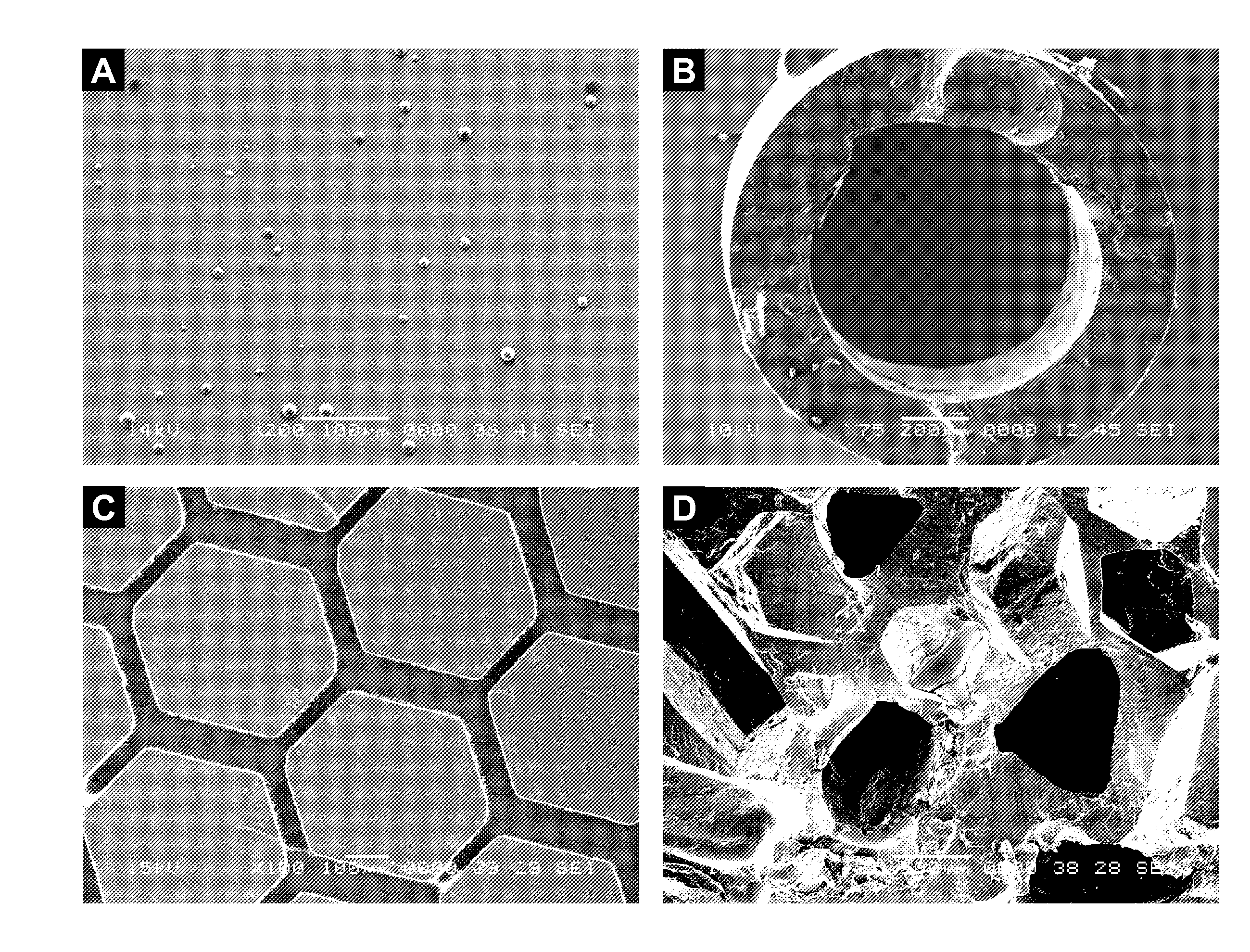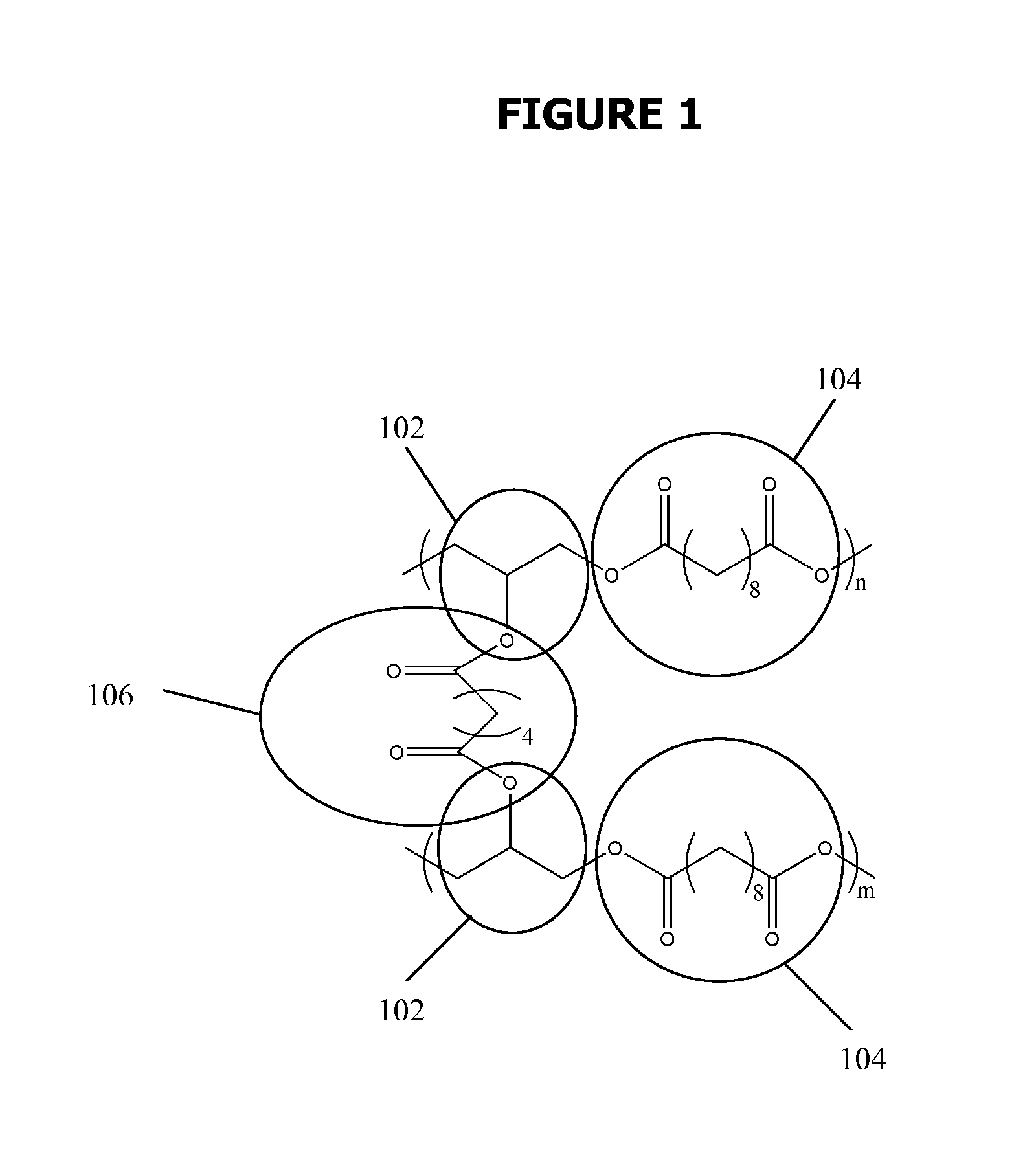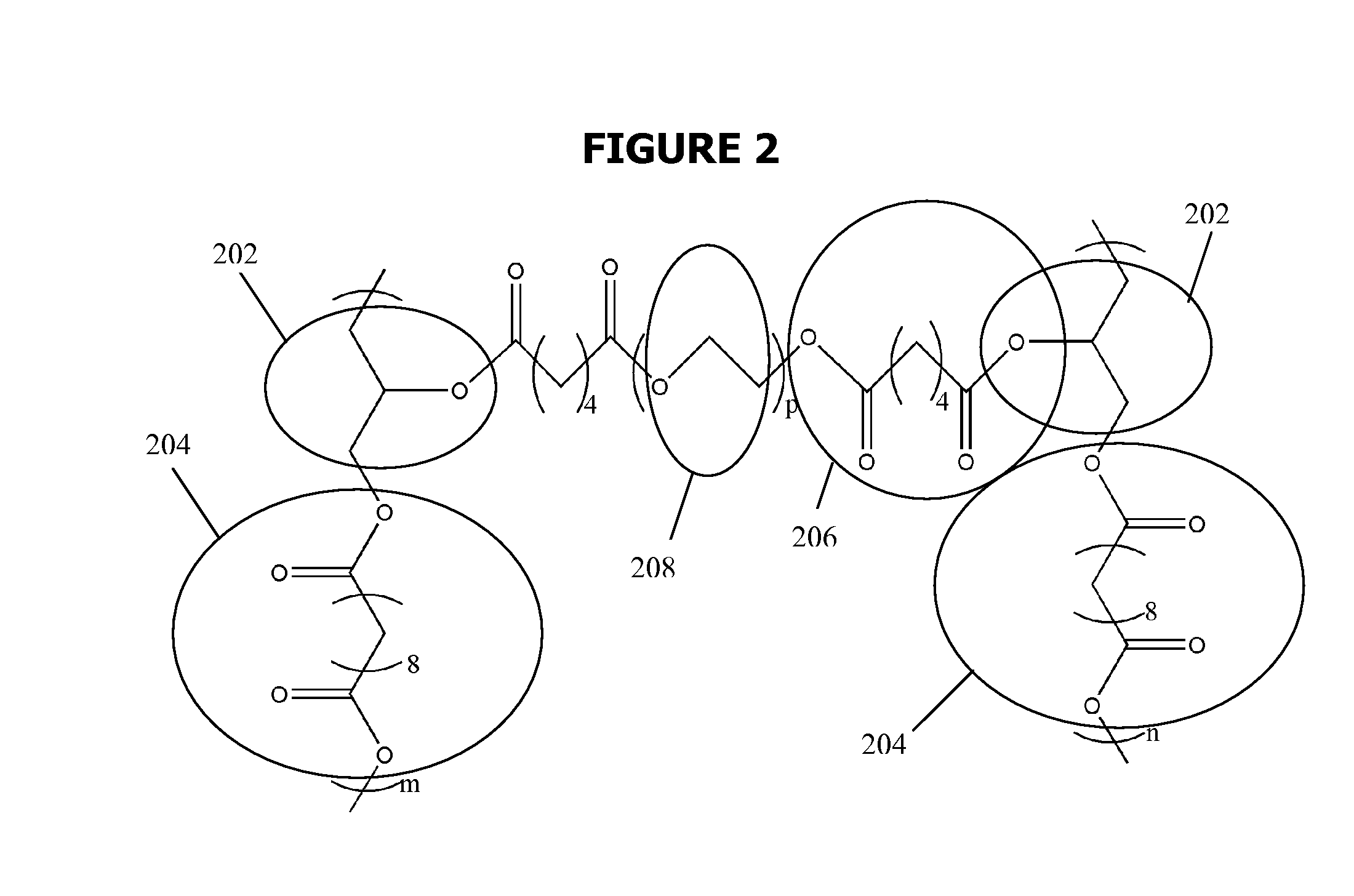Biodegradable Elastomers
a technology of elastomers and biodegradable materials, applied in biochemistry apparatus and processes, on/in organic carriers, enzymes, etc., can solve the problems of preventing the use of biomedical applications, and affecting the application prospects of biomedical applications
- Summary
- Abstract
- Description
- Claims
- Application Information
AI Technical Summary
Benefits of technology
Problems solved by technology
Method used
Image
Examples
example 1
PGS, PGSA and PGSA-PEG Copolymers
Synthesis of the Pre-Polymer and Acrylated Pre-Polymer
[0153]All chemical were purchased from Sigma-Aldrich (Milwaukee, Wis., USA), unless stated otherwise. pre-polymer was synthesized by polycondensation of equimolar glycerol and sebacic acid (Fluka, Buchs, Switzerland) at 120° C. under argon for 24 h before reducing the pressure from 1 torr to 40 mtorr over 5 h, resulting in a viscous liquid. The acrylation of the pre-polymer was prepared from the pre-polymer without further purification. The polycondensation was continued for another 24 h, yielding a viscous pre-polymer. This material was used without further purification.
[0154]A flame-dried round-bottom flask was charged with PGS pre-polymer (20 g, with 78 mmol hydroxyl groups), 200 mL anhydrous dichloromethane, to make a 10% solution (w / v). After adding 20 mg 0.18 mmol) of the catalyst 4-(dimethylamino)-pyridine (DMAP), the reaction flask was cooled to 0° C. under a positive pressure of nitrogen ...
example 2
In Vivo Data and Biocompatability
[0174]This example presents data on the modulation of the mechanical properties and the degradation rate of various embodiments of a PGSA composition of the present inventions. Data is presented on the effects of varying the density of acrylate groups in the polymer backbone and data is presented for copopsitions of PGSA copolymerized with various proportions of low molecular weight poly (ethylene glycol) diacrylate. Data is presented on the influence of these modifications on the biomaterial's degradation mechanism and rate (in vitro and in vivo) and the mechanical properties and biocompatibility in vivo.
Materials and Methods
Synthesis of the Pre-Polymer and Acrylated Pre-Polymer
[0175]All chemical were purchased from Sigma-Aldrich (Milwaukee, Wis., USA), unless stated otherwise. Both PGS and PGSA were synthesized substantially as described in, Wang Y, Ameer G A, Sheppard B J, Langer R., Nat. Biotechnol 20(6): pp 602-6 (2002), the entire contents of w...
example 3
3D Matrix Compositions for Encapsulation and Proliferation of Cells
[0203]In various embodiments, the present inventions provide biodegradable elastomeric compositions and materials as a 3D matrix for the encapsulation and proliferation of cells. Encapsulating cells within a matrix of various embodiments of the present inventions can create a three-dimensional architecture and allows improved control over the microenvironment. In various embodiments, PGSA combined with glycerol is used to create a porous scaffold that allows for encapsulation of the cells within the porous scaffold, prior to polymerization. For example, in various embodiments a liquid porogen / cell delivery vehicle consisting of glycerol is formed as a temporary substrate to protect the encapsulated stem cells and to create pores within the resultant PGSA network to provide, e.g., a porous scaffold. In various embodiments, this material is more bioelastic than traditional hydrogels, and allows stretching of the scaffo...
PUM
| Property | Measurement | Unit |
|---|---|---|
| Temperature | aaaaa | aaaaa |
| Temperature | aaaaa | aaaaa |
| Fraction | aaaaa | aaaaa |
Abstract
Description
Claims
Application Information
 Login to View More
Login to View More - R&D
- Intellectual Property
- Life Sciences
- Materials
- Tech Scout
- Unparalleled Data Quality
- Higher Quality Content
- 60% Fewer Hallucinations
Browse by: Latest US Patents, China's latest patents, Technical Efficacy Thesaurus, Application Domain, Technology Topic, Popular Technical Reports.
© 2025 PatSnap. All rights reserved.Legal|Privacy policy|Modern Slavery Act Transparency Statement|Sitemap|About US| Contact US: help@patsnap.com



